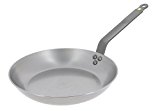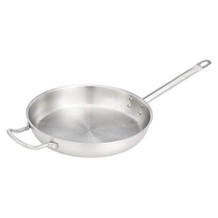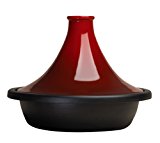Cookware set purchasing advice: how to choose the right product
- What You Need to Know
- Cookware sets consist of three to ten different pots including lids and provide a basic part of the kitchen equipment right away.
- Extensive variants include other cookware, for example pans, as well as accessories such as strainer inserts, spatulas or knives.
- Stainless steel pots are energy-saving and suitable for most dishes, but nickel allergy sufferers should avoid the material.
- Pay attention to the condition of the handles, tight-fitting lids and a pot base with good heat conductivity that is flat when heated.
- Only pots made of cast iron are suitable for induction in their pure form, but a magnetisable layer in the base gives pots made of other materials this property.
Pots for all occasions
A certain number of pots is part of the basic equipment of every household. Even for the parallel preparation of side dishes, vegetables and sauce, you often need three. If you like to cook frequently or for several people, you can choose from a variety of sizes and shapes: There are suitable versions for every conceivable preparation method – such as boiling, blanching, poaching, braising, roasting or steaming. With a little practice and the right pots, a variety of sophisticated dishes can be prepared – ideal for those who want to take their cooking skills to a new level. Those who only cook occasionally do not need a large collection, but a few cooking pots in several sizes should not be missing in any household. A matching cookware set offers the most important cooking pots in a complete package.
What are the advantages of a cookware set?
A cookware set is particularly recommended for those who want to completely re-equip their kitchen with kitchen utensils, for example after a move or due to heavy signs of use on the existing pots. Hobby cooks and all those who want to become one benefit from having the right pot to hand for every purpose. With a cooking pot set, you get the most important utensils in the course of one purchase and thus save time in the search. In addition, cookware sets are usually cheaper than buying them individually. Additional special pots in the same design are also available from the respective manufacturer, so that the equipment can be expanded if necessary. From a stylistic point of view, a coordinated set looks more harmonious in the kitchen than a jumbled collection. Furthermore, many cookware sets are designed so that you can stack the pots inside each other and store them in a space-saving way.
Common pot shapes
In the modern kitchen, there is not just one universal cooking pot. Pots in different shapes are available for every dish and preparation method. The most common designs found in cookware sets are the following models:
Meat pot
The meat pot is known to most consumers as a classic cooking pot. It is particularly suitable for the gentle preparation of meat dishes. It can also be used for rice, noodles, potatoes and vegetables.
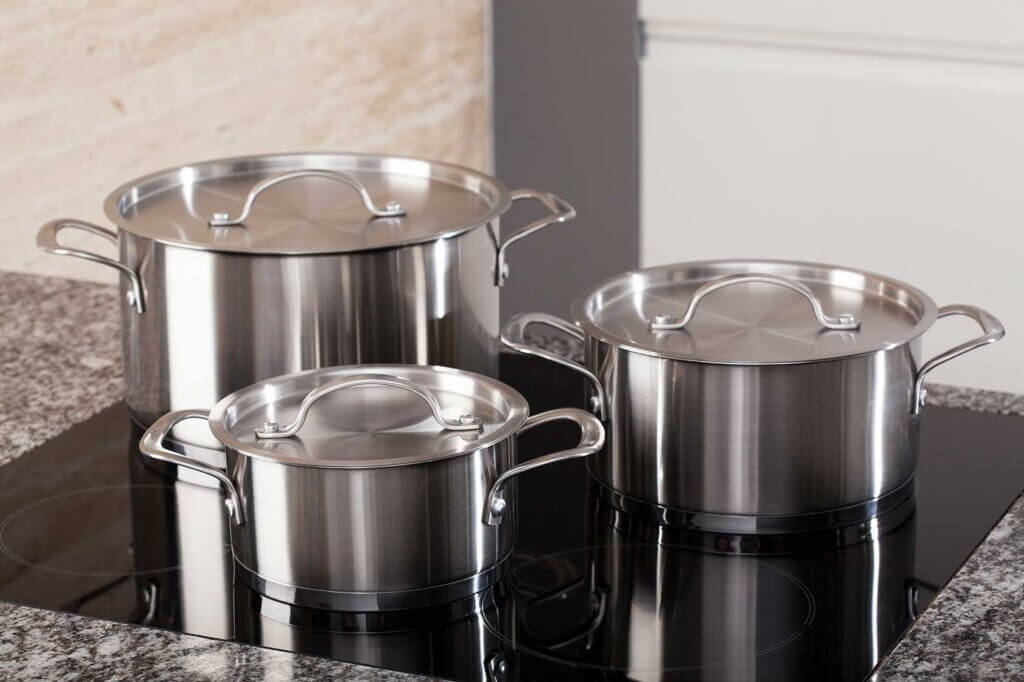
Roasters, casseroles and stewpots
Roaster, stew pot and casserole often mean the same thing: a pot in a round, oval or rectangular shape that can be used for braising meat, poultry and for gratins and stews. A roasting pot often describes the round version. While all versions can be used for the oven, roasters also describe the version designed for roasting in the oven.
Saucepan
A saucepan is a small pot with a pan-like handle that is particularly suitable for preparing sauces or soups.
Vegetable pot
The vegetable pot specialises in cooking vegetables gently so that the nutrients are preserved. It is a slightly higher pot with a lid that sits firmly on the rim of the pot. The pot is just as suitable for soups and stews as it is for roasting and stewing in its own juices.
Milk pot
The milk pot is rather small with an average diameter of 14 centimetres and has a spout that allows you to pour liquids out of the pot easily. Thanks to the high pot wall, liquids such as milk or cocoa do not boil over so quickly.
Special pots
With the pots mentioned so far, you can already prepare countless dishes, but if you cook a lot and like to cook, some special pots offer a variety of additional possibilities.
Asparagus pot
The asparagus pot is particularly high and has a lattice-shaped insert, which allows the asparagus spears to stand upright in the pot. When you fill the pot with water so that the asparagus heads are covered, you steam them. This preserves most of the flavour, vitamins and nutrients. The asparagus pot is also suitable for other vegetables or spaghetti.
Deep-frying pot
Deep-frying pots are used for clean deep-frying of vegetables, fish, meat and baked goods. They have a wire frying insert on which you place the food. The excess fat drips off, while the lid prevents hot splashes.
Sauteuse
The sauté pan is a cross between a pot and a pan. It has a high rim that slopes outwards and either a handle or two handles. The product is ideal for frying food briefly while swirling it, because the sauté pan reacts quickly to changes in temperature.
Roman casserole
The oblong or oval Roman pot is made of clay and has a domed lid. Food is prepared in the oven; the Roman pot is not intended for the cooker. To prevent the food from drying out, you should water the pot before use.
Watering the Roman pot
To water the Roman pot, place it and the lid in your sink and turn on the water. Leave your Roman pot completely covered for about 15 to 20 minutes. Then you can continue to use it.
Pressure cooker
In a pressure cooker, food cooks much faster than in a conventional pot because the temperature inside the pot exceeds 100 degrees Celsius. To achieve this, users put the food into the hermetically sealed pot with a little water, so that the water vapour created during heating builds up excess pressure. This faster cooking process preserves many vitamins.
Simmer pot
The simmer pot is characterised by a cavity between the inner and outer pot walls. You fill this with water, which almost starts to boil when heated. Food cannot burn in this pot because the temperature never rises above the boiling point of 100 degrees Celsius.
The different materials
Commercially available pots are made of different materials. Sometimes the addition of a second material compensates for disadvantages of the main component. The most popular material is probably stainless steel, closely followed by cast iron and aluminium. Pots made of copper are also frequently used. Pots made of ceramic and glass ceramic, on the other hand, eke out a niche existence. Each of these materials has specific strengths and weaknesses, from which specific applications can be derived.
Stainless steel pots
Models made of this material are not only robust, durable and easy to clean, most dishes also turn out excellently with them. However, stainless steel pots take longer to conduct heat to the inside of the pot. To improve conductivity, some manufacturers use sandwich or capsule bases. In a sandwich base, two layers of stainless steel enclose a layer of aluminium or copper; in a capsule base, the stainless steel completely encases an aluminium or copper core. If a stainless steel pot has an additional magnetising layer, it is suitable for induction.
Stainless steel is steel with a high degree of purity: its main component is iron, other components are nickel, titanium or chromium. The specific mixtures change the cooking properties to a certain degree. The majority of pots are embossed 18/10, which stands for stainless steel that is, among other things, resistant to food acids. The number “18” stands for 18 percent chromium, the “10” for the nickel content. Some manufacturers give this embossing their own brand name: At WMF, for example, it is Cromargan. Stainless steel pots are generally not suitable for people allergic to nickel.
Cast iron pots
Cast iron pots are resistant. Their thick walls and base conduct heat very well. This makes them suitable for high temperatures. Compared to other materials such as stainless steel, the models heat up slowly, but once the temperature is reached, they provide an even heat transfer to the food. Cast-iron models are particularly suitable for searing meat, which then stews in its own juices. This is why the material is very popular for casseroles and roasters. It is also suitable for all types of cooker, including induction.
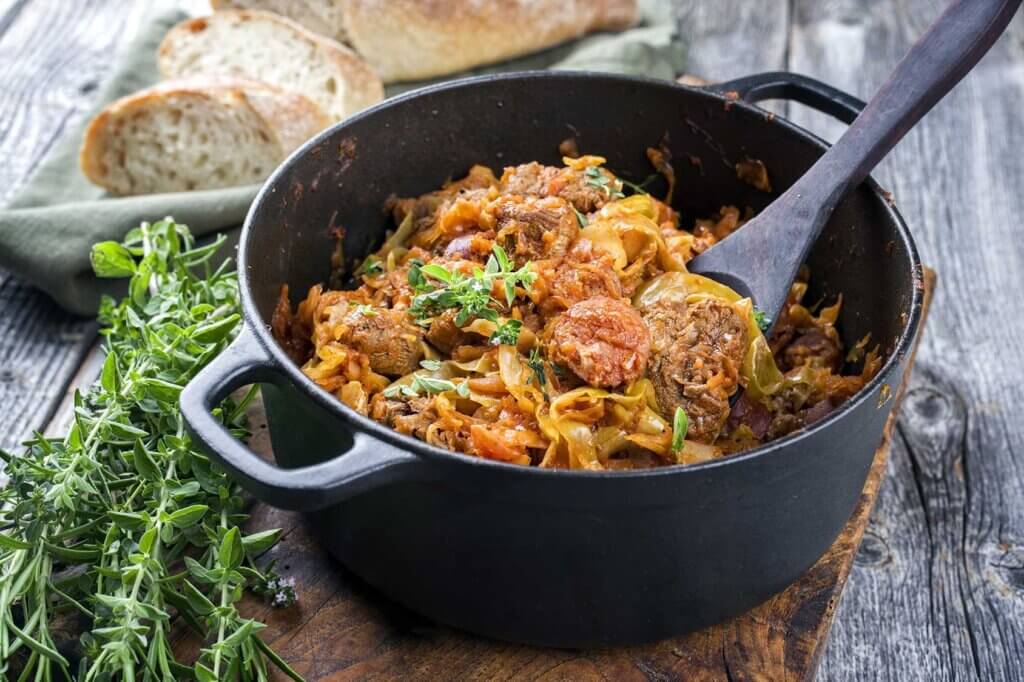
Cast iron pots are available in uncoated and enamelled versions. The variant in its pure form must be baked with fat before it is used for the first time. This gives the pot a natural protective layer called patina. This not only gives the pot non-stick properties, but also contributes to the aroma of the food.
Aluminium and cast aluminium pots
Aluminium conducts heat very well, but stores it only slightly. In the case of aluminium variants, you will inevitably come across the product designations aluminium and cast aluminium pots. The differences lie in the way they are made: Ordinary aluminium pots are made by bending and cutting aluminium sheet; this makes them comparatively light. Cast aluminium, on the other hand, is cast aluminium. Unlike aluminium pots, whose wall thickness is continuous, cast aluminium designs can have a thick base but a thin wall, for example. You do not have to bake cast aluminium products. Like aluminium pots, they usually have a non-stick coating. Cookware made of aluminium is also only equipped for induction with a ferromagnetic layer.
Copper pots
Copper pots have a high thermal conductivity, so they heat the food more quickly. Since the heat also reaches the food via the sides, it cooks evenly from all sides. Another advantage of conductivity is the short reaction time to temperature changes, which means you can adjust the temperature of the food very quickly and precisely. Copper pots are suitable for all cooking techniques except very hot searing and long cooking at high heat. However, the material is not suitable for induction.
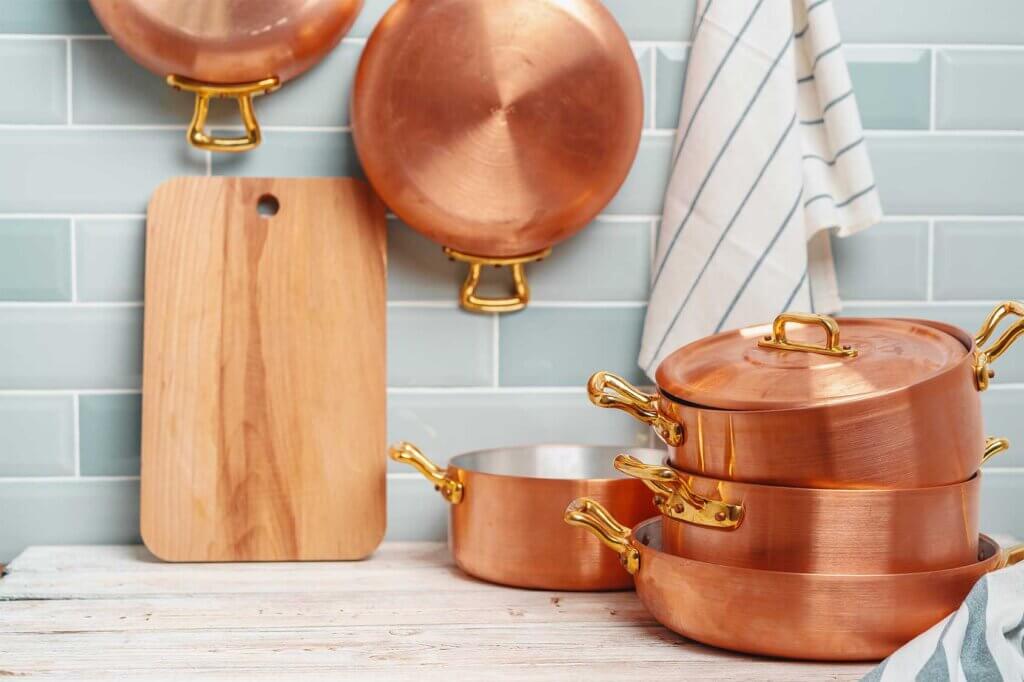
Copper also has an antibacterial effect: neither viruses nor bacteria survive on the surface. However, models made of copper are more sensitive to scratches, minor dents and deformations than other pots, such as those made of stainless steel. To make the material acid-resistant, manufacturers coat their products with tin, stainless steel or ceramic.
Ceramic pots
Pure ceramic pots tend to have a niche existence, because the material is mainly used as a non-stick coating. Ceramics is a collective term that includes different types of stoneware and clay.
The typical ceramic pots fall into the category of stoneware and often function as braising pots or roasters. Depending on their composition, they are also suitable for cooking, baking and grilling. They are very hard, scratch-resistant, durable and frost-resistant. Ceramic pots store and distribute heat well, the food cooks evenly and even after the cooker has been turned off. However, they do not tolerate high heat. Stoneware pots are not suitable for induction.
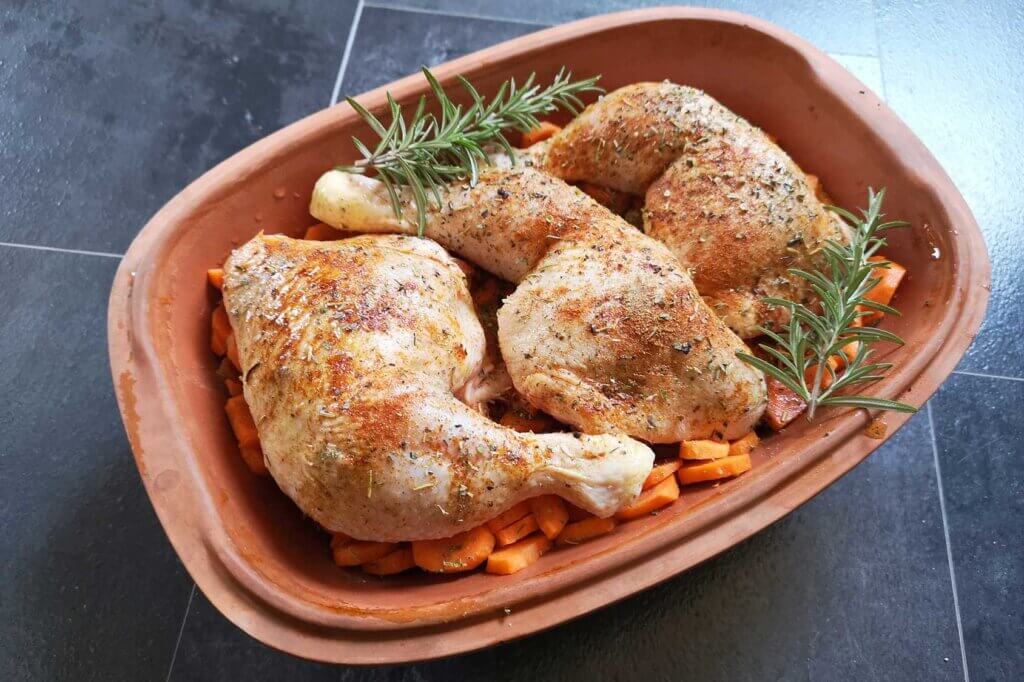
Clay pots are not break-resistant. The material is mainly used for Roman pots, which are designed exclusively for the oven. Manufacturers coat ceramic pots with enamel, for example, to improve the properties of the material.
The special ones: Glass ceramic pots
Glass-ceramic pots are characterised by a high heat capacity, so that the cooker can be switched off early, but the food continues to cook. Furthermore, they are very resistant to heat and cold, so high temperature differences do not harm them. This means you can also use the pots in the oven, microwave and freezer. However, the pots are not suitable for induction. Because of the smooth surface, cleaning is easy, even in the dishwasher if necessary.
The characteristics of the different coatings
Coated pots are coated with a certain material on the inside to compensate for undesirable material properties of the vessel. For example, cast iron pots may be coated with enamel to protect against corrosion, while copper pots are made insensitive to acids by being coated with tin, ceramic or stainless steel. In everyday language, however, “coating” is usually understood to mean a non-stick coating, mainly ceramic or the plastic PTFE, also called Teflon. Pots coated with enamel occupy a special position, as the pot material and enamel coating merge to form a new composite material.
Well-tried enamel
With their colourful designs, enamel pots have been beautifying our kitchens since the 19th century. Enamel is a protective coating called fused glass that can be spread on various substrates. From then on, base material and coating are inseparable. Pots coated with enamel are corrosion-resistant and withstand high temperatures, aggressive chemical substances, scratches and cuts. If you want to bake a dish, simply place the enamel pot in the oven. In addition, food sticks less to the inside of the pot.
The cores of enamel pots are made of cast iron, steel or aluminium. Their surface is smooth and non-porous due to the coating, so it is easy to clean. However, you should not expose the pots to strong temperature differences, as this damages the enamel coating. For example, you should not remove the pot from the boiling hot hob and rinse it immediately with ice-cold water.
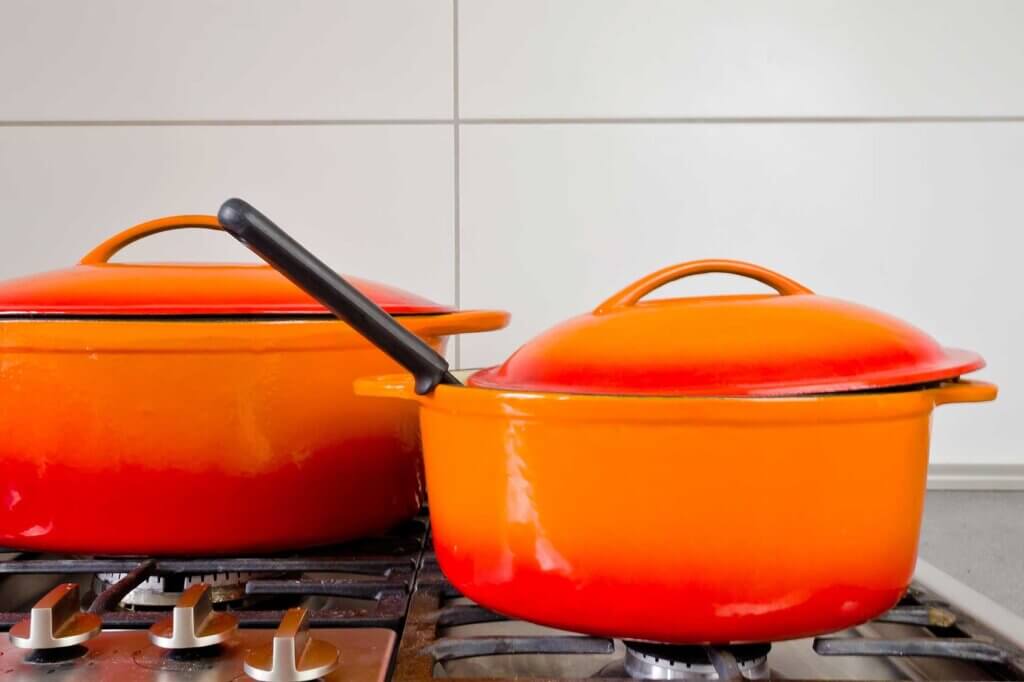
The versatile ceramic
Pots coated with ceramics have the typical properties of the said material: they keep warm well, are very hard and resistant to wear. The ceramic powder on the surface gives it a glass-like structure and non-stick properties, which means that food with this cookware is not only difficult to burn but also does not stick.
However, ceramic coatings are not indestructible: fine scratches and discolouration as well as a decreasing non-stick effect are conceivable, especially with inferior coatings. Some manufacturers apply several layers of ceramic materials to ensure high stability and durability.
What is steel ceramic?
Steel ceramic is a ceramic surface for pots and other cookware such as frying pans. In contrast to powder coating, the base and top layers fuse with the steel body to form a single unit. The processing of steel ceramics is thus similar to enamelling, which is why the coating is often equated with steel enamel. However, the latter uses layers of fused glass instead of ceramic. The ceramic material was developed by Silit and is known under the brand name Silargan. It absorbs neither odours nor flavours. Such steel ceramic pots are temperature-resistant, robust and very easy to clean.
The PTFE coating: Teflon
PTFE stands for “polytetrafluoroethylene” and is a plastic coating that gives pots and other cookware non-stick properties. You may know this coating under the trade name Teflon. Stainless steel, cast aluminium and aluminium, for example, benefit from PTFE coatings. The surface is waxy and resistant to acids. Food does not stick to it. High-quality Teflon coatings are made up of several layers. Manufacturers such as WMF and Rösler use their own versions of Teflon. So it makes sense to look into the specific coating of the cookware set you want.
Be careful not to overheat pots with PTFE coating, as overheating releases potentially harmful substances. It is advisable not to set the cooker on the highest setting and not to leave the PTFE-coated pot on the plate for a long time without contents. A pot filled with food is more difficult to overheat.
What to look for when buying
The right cookware set makes it easier to prepare a variety of dishes, but as the different materials and shapes already suggest, the choice is vast and confusing. In addition to the features of a cookware set, the quality of the individual pots is particularly important. The following criteria help you to choose the right cookware set.
What belongs in a cookware set
The numerous cookware sets differ greatly in detail. While small saucepan sets consist of only three differently sized saucepans with lids, there are also those with five or ten saucepans. Some sets include additional cookware and kitchen utensils such as a frying pan, roaster or frying pot, various cooking utensils and a strainer or cooking insert. Note that manufacturer’s specifications such as “10-piece”, “15-piece” or more also include the kitchen utensils.
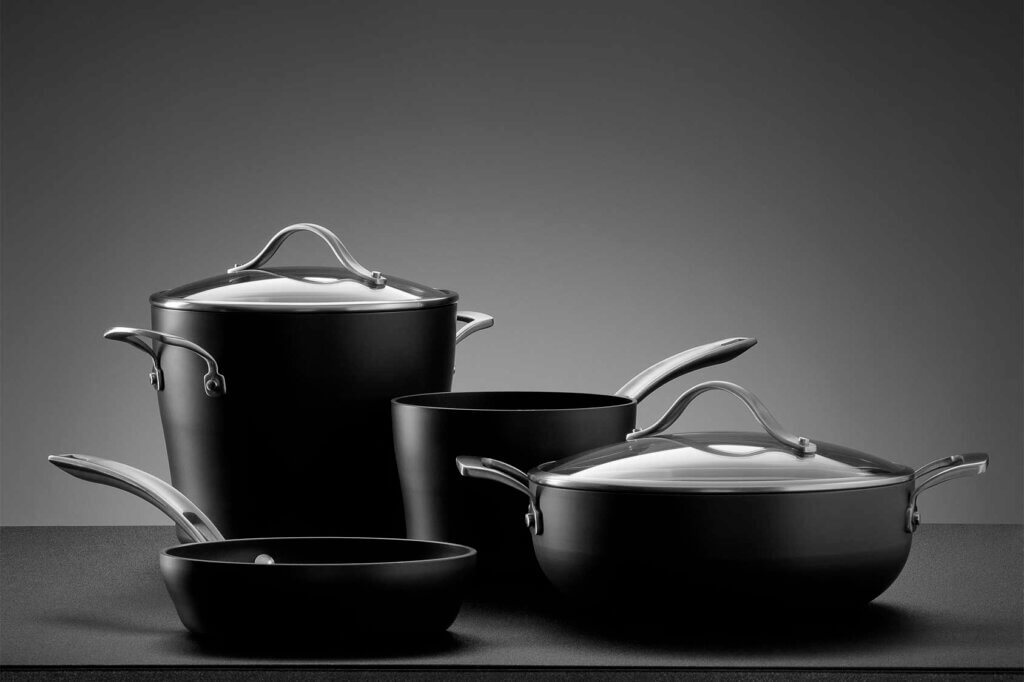
The cooking pots that come in several sizes in each set are called meat pots. Common pot diameters and capacities are for example:
- 16 centimetre diameter with a capacity of about two litres,
- 20 centimetres in diameter with a capacity of about three litres, and
- 24 centimetres in diameter with a capacity of about six litres.
In addition to the meat pots or even instead of one, many cookware sets include a 16-centimetre diameter saucepan. Not every saucepan automatically comes with a matching lid. Some cookware sets include a large oblong roaster, in which the cook can prepare larger pieces of meat and other fried food, or a roasting pot. Simple single-walled milk pots can also be found in some cookware sets. Designs such as the original-profi collection 5-piece cookware set from Fissler shine with a sauté pan.
Multi-part cookware sets are equipped with more than various cooking pots. In addition to a pan, usually a frying pan, some designs include cooking utensils such as a steamer insert for one of the pots – usually a medium-sized one with a diameter of 20 centimetres. It has the shape of a saucepan, but the bottom is perforated. Some sets include a strainer insert with holes in the bottom and walls.
Recommended for anyone who is setting up a new household are cookware sets with bowls for preparing or serving food as well as additional cooking and eating utensils. These include, for example, soup ladle, whisk, spatula, cooking spoon or serving tongs.
The lid
The lid is one of the most important aspects when buying a pot, as it has a significant influence on cooking time, nutritional content and energy consumption. If the lid is not properly placed on the pot, important nutrients as well as steam will escape. Therefore, it is advisable to have a cookware set in which each pot is equipped with the appropriate lid. A lid should have a high intrinsic weight so that it does not jolt during cooking.
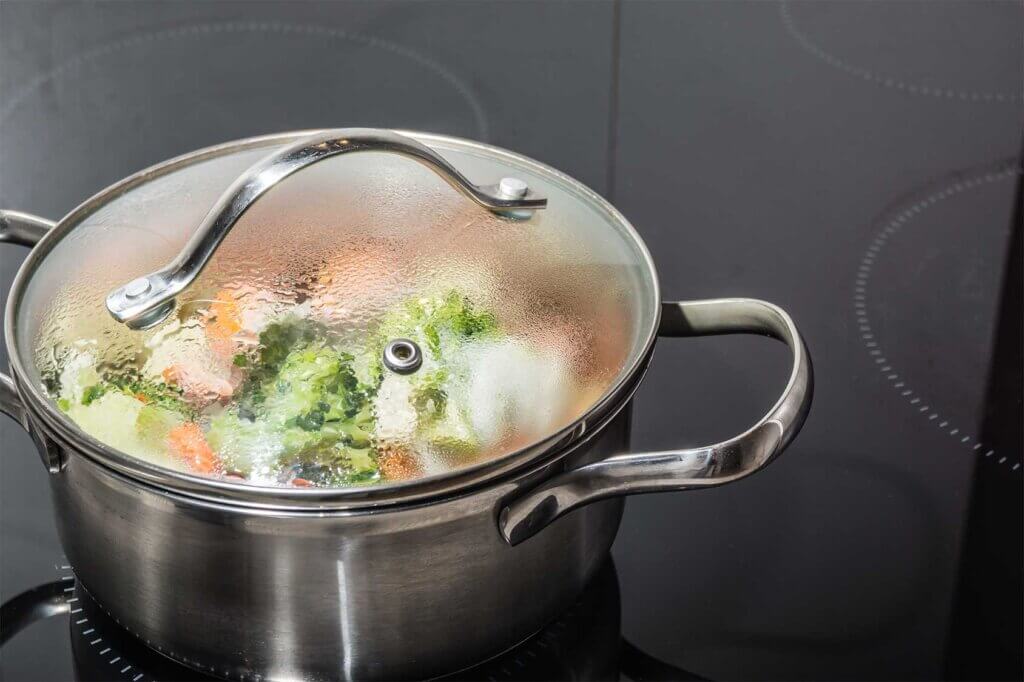
With a glass lid, you can check the food being cooked without lifting the lid. This saves energy and does not interrupt the cooking process. However, the glass lid often fogs up, so you do have to lift it. Small steam holes in the glass lid prevent it from rattling because the steam escapes through the holes.
The handles
For the handles to do their job – to help you lift the pot – they should be made of a material that does not conduct heat well. The handles of stainless steel pots, for example, stay cool because the heat does not transfer from the pot to the handles. An alternative are cold handles, which are made of the same material as the rest of the pot, but are mounted in such a way that they only absorb the heat of the pot to a limited extent: The pot handles are then warm, but no longer hot.
Some cookware sets come with heat-insulated handles made of silicone or plastic, which allows you to lift the pot easily. Depending on the manufacturer and product, these are also suitable for oven temperatures up to 240 degrees Celsius. Before buying, find out whether the oven resistance is also given for your desired set. The handles of cast iron pots are often made of the same material as the pot and heat up with it. A pair of potholders should therefore not be missing in the kitchen.
While cooking pots with cast iron handles can withstand oven temperatures without any problems, versions with wooden handles are not suitable for the oven. Removable handles not only make it easier to store the pots; if the handles are the only components that are not dishwasher or oven safe, the pots can also be placed in the oven or dishwasher without them.
The base and the types of cooker
When it comes to heat conductivity and distribution, apart from the material, it is also important that the base is flat on the inside and outside when hot. This is the only way to ensure that the heat reaches the food in the pot evenly. Whether a pot is level can be easily tested with a piece of butter: if the melting butter runs in a certain direction, the pot is not level.

To make sure you can use your new cookware set, make sure it is compatible with your type of cooker before you buy it. Owners of an induction hob should pay particular attention to this point, because induction hobs heat food directly in the pot by means of electromagnetic waves, which is why the bottom of the pot must be made of a material to which a magnet will stick. Iron and pure steel meet this requirement. Cast-iron pots can therefore be used without any problems. Materials such as aluminium, stainless steel or copper are not suitable for induction. However, many manufacturers provide their pots with a thin layer of ferromagnetic material to make them suitable for induction hobs. Cookware that is suitable for all types of cookers is often labelled “all-stove base” by the manufacturer.
Which pots are suitable for the oven?
Whether a pot is suitable for the oven depends mainly on the handles and the quality of the material. Basically, pots made of cast iron, stainless steel, copper, cast aluminium, glass ceramic and earthenware can be used in the oven. However, you should follow the manufacturer’s instructions for correct handling, such as the maximum temperature. Cast iron pots are considered optimal because they distribute the oven heat evenly inside the pot. It is important that the handles are also ovenproof; wooden and most plastic handles are not. The exception are special heat-resistant plastic handles. Look out for the manufacturer’s labelling: ovenproof pots can be identified by a symbol consisting of a square with two horizontal parallel lines.
Practical extras
While the average cooking pot with a lid is sufficient for preparing food, some cooking pots have useful extras that make them easier to use. An upturned pouring rim is beneficial when you want to pour out a liquid, such as soup or sauce. Without one, it is possible that the liquid will drip onto the base. If there is a measuring scale on the inside, you save yourself a separate measuring cup: you can measure the exact amount of water inside the pot.
Is a branded cookware set necessary?
Cookware sets are available in a wide price range: while no-name sets can be found for less than 30 euros, some branded sets command prices of over 700 euros. Cookware sets from certain brands such as WMF, Tefal, Fissler or Le Creuset are not only available in a large selection, they are also the focus of extensive tests and comparisons. So you are more likely to find a set that meets your needs. However, they are more expensive than cookware sets from unknown brands that can be purchased online or at discount stores. With no-name cookware sets, the quality in terms of workmanship as well as cooking results is not apparent, they have not been tested. So there is a chance that the inexpensive no-name set will quickly become unusable. However, consumers who only cook occasionally or mainly heat food do not need an expensive or extensive set. Hobby cooks, on the other hand, should choose a brand-name cookware set.
How to clean your cookware set
The correct care of your cookware set depends on the material and the coating. Only those who care for the different materials correctly will enjoy them for a long time. For example, many pot models are not suitable for the dishwasher. These include cast iron and copper pots, coated pots and those with plastic and wooden handles. Some cookware sets are labelled as dishwasher-safe, but here, too, it is advisable to make use of the suitability only occasionally, as dishwasher cleaning affects the material properties in the long run. Products marked as dishwasher-safe, on the other hand, can be washed in the dishwasher without hesitation.
To clean by hand, it is usually sufficient to use warm water, a sponge or microfibre cloth and a little washing-up liquid. With coated pots, detergent is often not necessary as long as the pan is still warm. Stainless steel and scouring sponges as well as aggressive cleaning agents should not be used. Limescale marks as well as coloured discolourations on stainless steel can be easily removed with a sponge that has previously been soaked in diluted vinegar or citric acid.
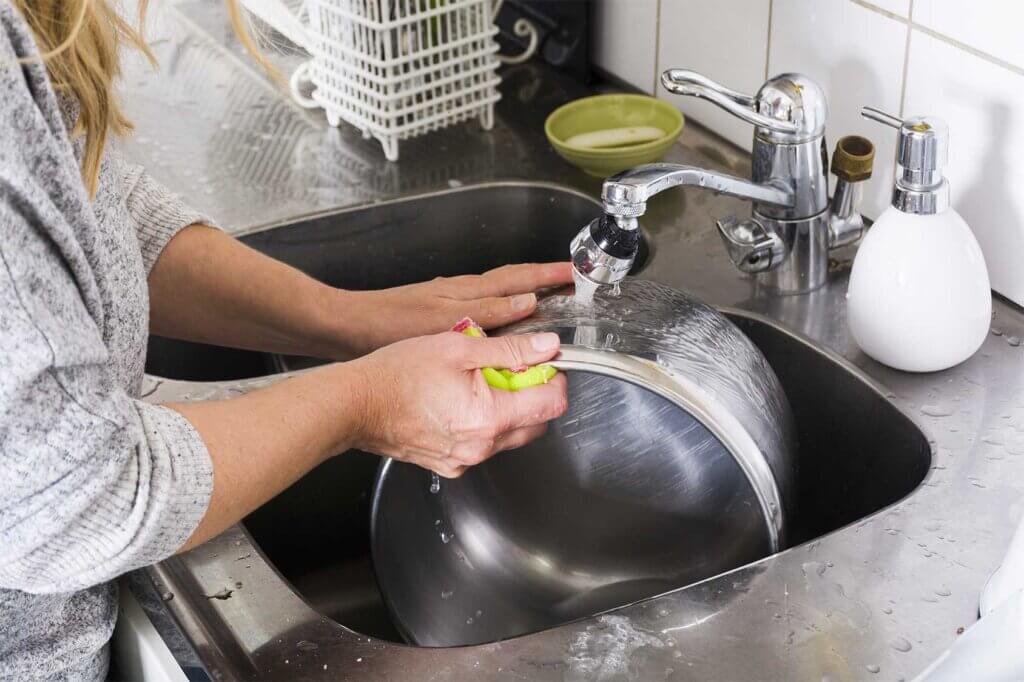
Cast iron pots should be allowed to cool down after cooking before wiping out all food residues with kitchen paper. Burnt-on food can be removed with a wooden spatula. You may need lukewarm water without detergent. Add a little frying oil to the dry pan. You do not need to grease enamelled cast iron; you can also clean it with a little washing-up liquid.
Image 1: © Photographee.eu / stock.adobe.com | Image 2: © HLPhoto / stock.adobe.com | Image 3: © fotofabrika / stock.adobe.com | Image 4: © Marcel / stock.adobe.com | Image 5: © Brinja / stock.adobe.com | Image 6: © Dmitry Ersler / stock.adobe.com | Image 7: © Mathias Karner / stock.adobe.com | Image 8: © Piotr Pawinski / stock.adobe.com | Image 9: © pfheonixx22 / stock.adobe.com


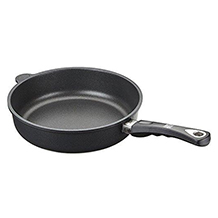


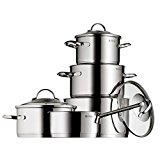


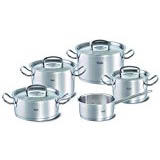
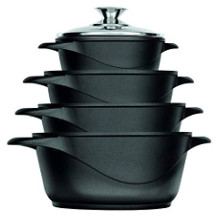
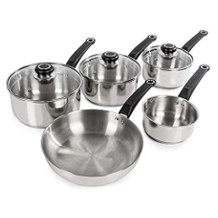
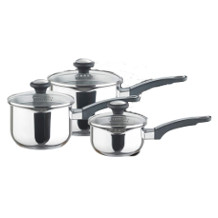
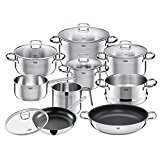
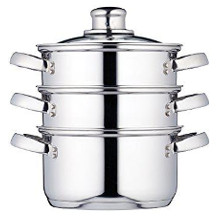

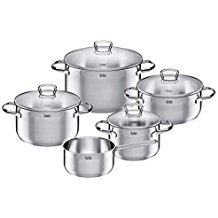
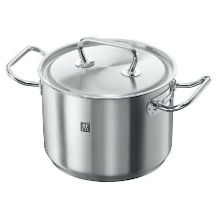
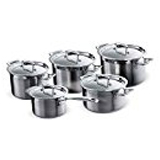
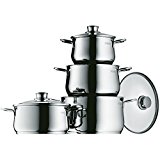
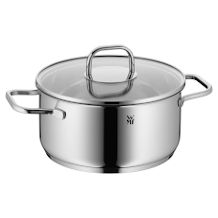
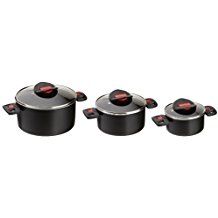
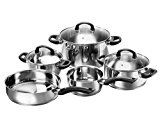
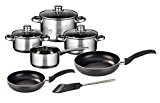
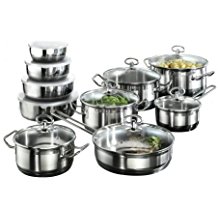
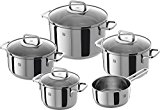
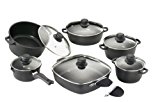
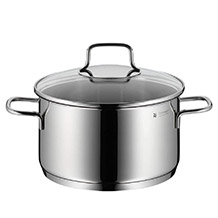
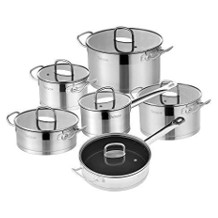

 9,306 reviews
9,306 reviews

